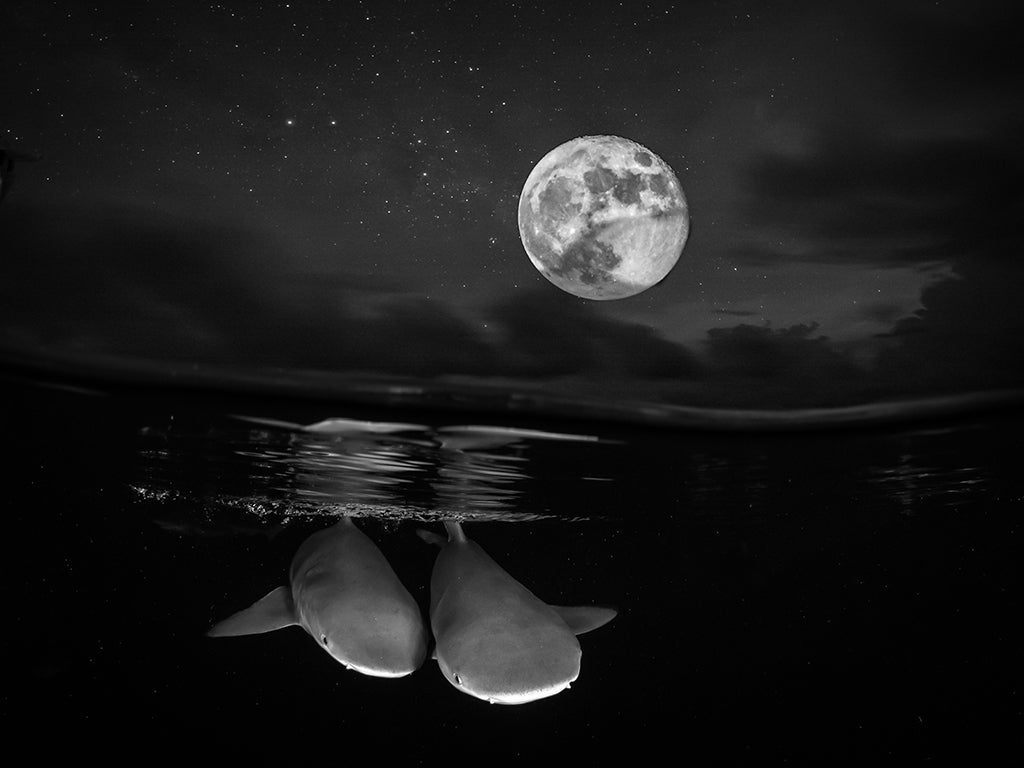Shark encounters vary, with most fleeting and far away. When you're swimming around and not actively shooting, keep your camera's aperture set to an opening that makes a nice ambient natural light exposure. Err on the side of slightly under exposed. That way you're ready when something big and unexpected comes out of the blue.
Strobes don't penetrate the water much more than 5-6 feet (2m). When the shark is swimming at a distance, TTL strobes will fire at or near full power. If you are lucky and have a close pass, TTL strobes will power down automatically to not over expose.
Shark Dives
Sharks that are being baited in are a slightly different scenario... you know that they are going to come in close. Try stopping down your lens to an aperture value between f/11 to f/16. This will make your water column pretty dark when shooting straight on or at a downward, but not if you tilt the housing upward to see the brighter surface of the water. These smaller apertures are necessary if you find the sun in your frame.

ISO 200 • f/8 • 1/160 • Canon 50D with Tokina 10-17mm Fisheye
Super wide lenses are best for this because of their huge depth of field. A good fisheye or super wide lens will be sharp even if the animal touches your dome, and everything from the shark to the surface of the water can be in focus at the same time. Try a 16-35mm or the Tokina 10-17mm fisheye.
Where can you go from there?
A lot of great shark photos are taken with natural light. You'll definitely want to turn your strobes off if there is any particulate (or chum) in the water.
Shark silhouettes can be exciting. Keep your strobes off, point straight into the sun, then trust your light meter. The camera will suggest an aperture of about f/16 or so.

ISO 100 • f/16 • 1/160 • Canon 5D Mark II with Canon 8-15mm Fisheye
TTL setting on the flash lit up the belly of this shark, despite the backlighting from the sun. Silhouettes are usually dark, but don't have to be.
The backs of sharks are very dark, so if they are below you and swimming against white sand there can be wonderful contrast between the two.
Sunset split shots from the back of the boat when baited sharks come in have won many photo contests. Set your camera for proper exposure of the sunset, then use your strobes in TTL to light up the animal.

ISO 400 • f/16 • 1/160 • Canon Rebel SL1 with Tokina 10-17mm Fisheye
The shark exposure is determined by TTL communication with the strobes. You will need to set your camera manually to properly expose the sunset. The camera settings will change as the sunlight fades.
Additional Reading













